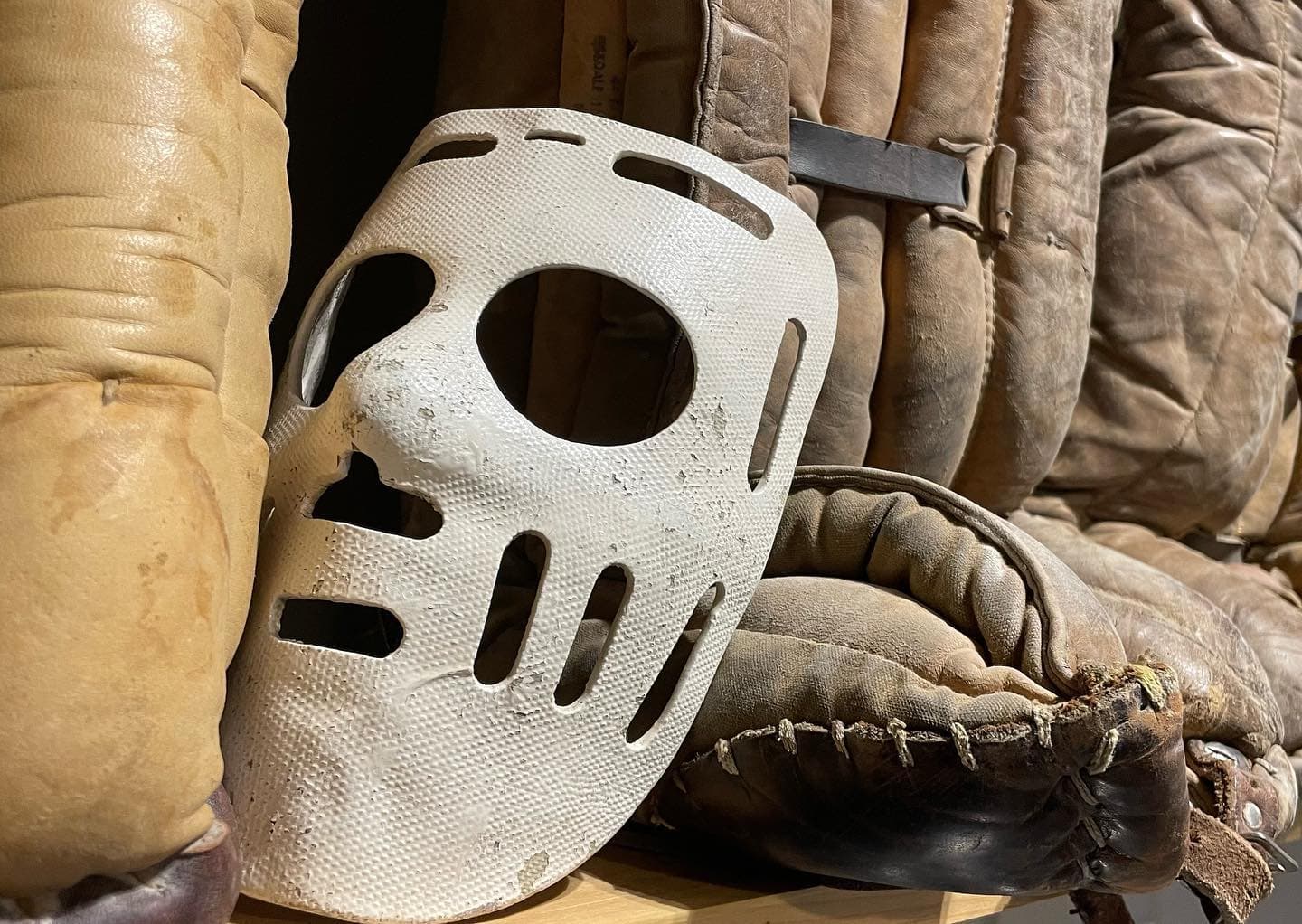
Since 1970
A Brief History
Several years ago, a long time customer and great goalie mentioned "no one knows the story of John Brown, your customers should know the story". Those comments have prompted this brief telling of our history - Thanks Forese. So if you've ever wondered when Brown Hockey entered the goalie business, then we've got a story for you. Officially we released our first product in 1970, but to understand why, we'll go back in time to a young hockey crazed boy in Maple, Ontario, Canada.
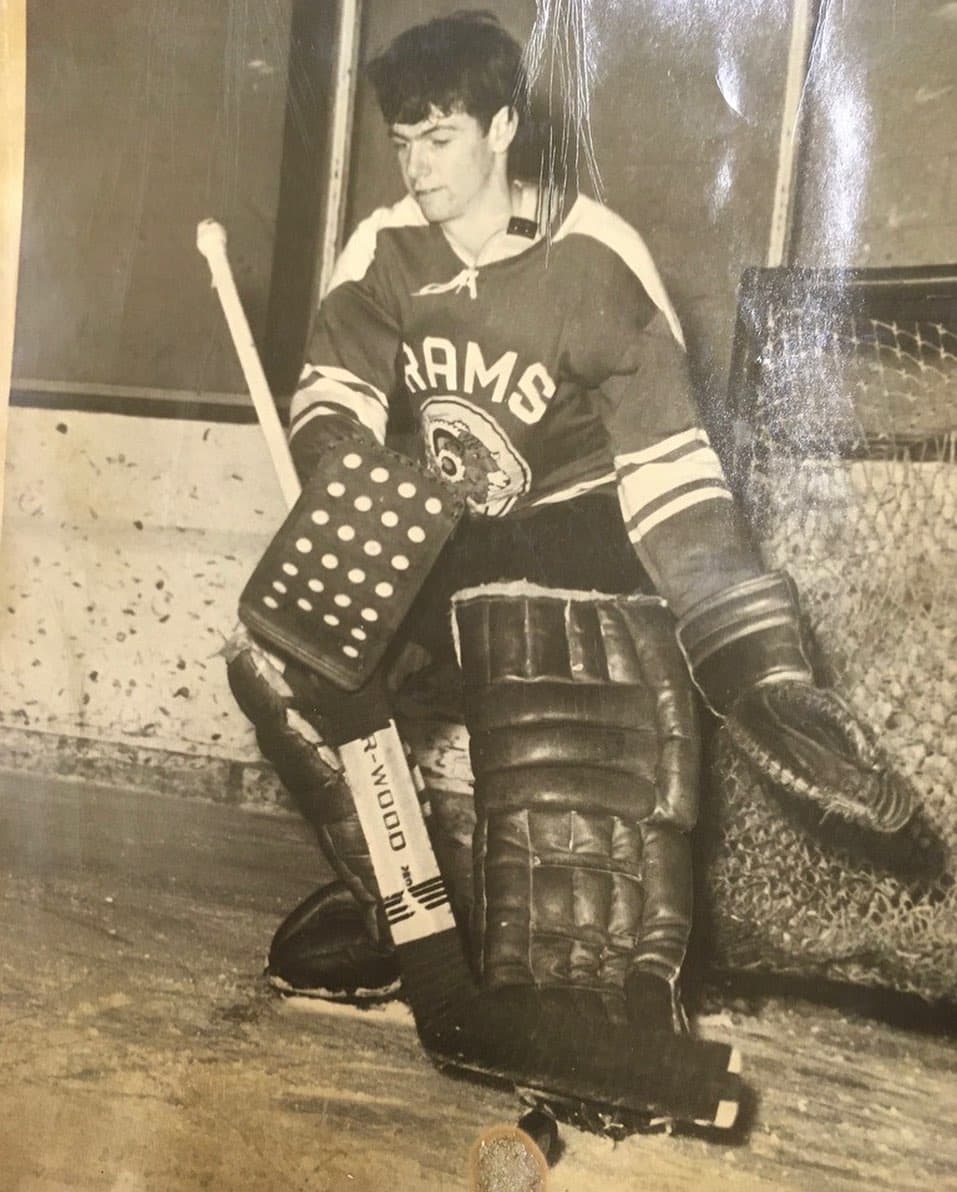
Hockey, Hockey, Hockey
John Brown grew up in the small town of Maple, Ontario, Canada. In those days it was a small farming and bedroom community for Toronto. John had watched numerous hockey games on the family's black and white television set, but when John's grandfather invited him to see the Maple Leafs play at the Gardens, the television would no longer be enough for this young boy.
The inside of the Gardens, to a 10 year old kid, was the most amazing thing I had ever seen. The roof was so high and the sounds were incredible, the puck passing from stick to stick and hitting the posts. That was definitely the start of the strong passion I have for the game of hockey.
John immediately wanted to play the incredible game of hockey, but at that time Maple had no arena or minor hockey, so he talked his father (a former goalie) into taking him to Aurora to play house league hockey.
I wasn't very good, but I loved it. I played house league as a left winger and then made the All Star team, which meant you traveled to small towns and played other teams. I was a grinder at best. The puck on my stick was like a hot potato.
At Bantam age John started playing house league as a goalie under the tutelage of his father. Quite quickly John rose to be an all-star goalie. He played one year in midget and then tried out for the Junior team in Richmond Hill, where he would play for 3 years.
I was hockey crazy. I had the best players over to my house to blast pucks at me wearing just gloves and a mask. I really wanted to play.
John was called up to the Hamilton Red Wings (considered Major A today), which was a significant step up in game play and a lot more travel.
We would go to Montreal and play in the Forum and there would be 16,000 fans. It was an incredible experience. My first game in net was an exhibition game in Sarnia and I got a shutout. Hot game at the right time.
Next time I got to play was in Hamilton and I got put in during the 3rd period and got a shutout again. Pretty lucky against the Junior Canadians. The Junior Canadians were good. A lot of guys from that team had long professional careers.
A month later we were in Ottawa and down 7-0 at the start of the second period. I got the dreaded tap on the shoulder... In I go. The 67's were flying and it was nasty. To me it felt that there was no team in front of me - Breakaways, and non stop 3 on 1's. The game ends 18-3, a new record in the OHL which stood for a few years before someone else got shelled 20-4. For me a dream was shattered.
John went back to Aurora and played Junior where he originally started. He continued to play hockey in university and finished playing with the Barrie Flyers in the Ontario Senior League.
About 20 years later I ran into the owner of the Hamilton Team, who told me when we were in Ottawa the team had stopped playing because they were trying to get the coach fired. Well they got 2 of us fired. It was a relief to finally find out I wasn't that bad, just in the wrong place at the wrong time.
A shattered dream became the catalyst that would inspire John to look at goalie equipment differently. His experience in the net and the state of his bruised body after each game pushed him to figure out how to produce better gear for goalies.
Playing goal taught me what needed to be better with equipment. When I played I had bruises everywhere: ankles, inside of my knees, hip bones, elbows, forearms, and always a bruised catch hand. I knew there had to be a better way to protect goalies.
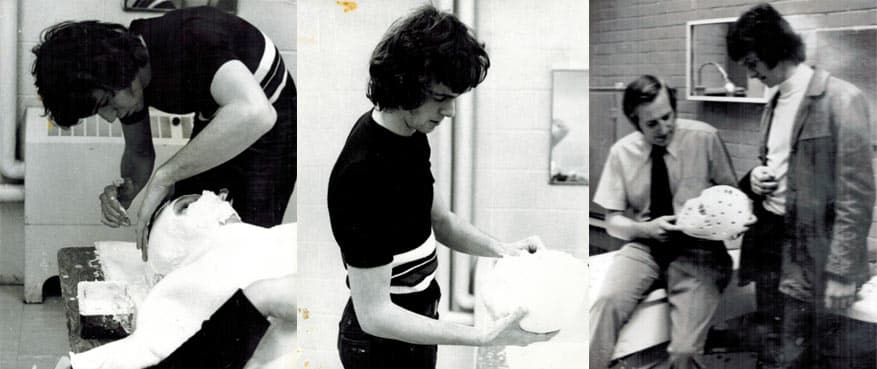
Custom Masks
Brown entered the goalie equipment business by offering custom moulded fiberglass face masks. Each mask was made from a plaster cast of the goalies face and from that their personalized face mask was produced. Hundreds of masks were sold across North America from 1970 to 1980.
When I played all I had was just a face plate. I wanted full head protection. No one was making the custom ones available to the normal guy. That is really what we did best, make the actual equipment that the pros wore available to the regular beet league goalie.
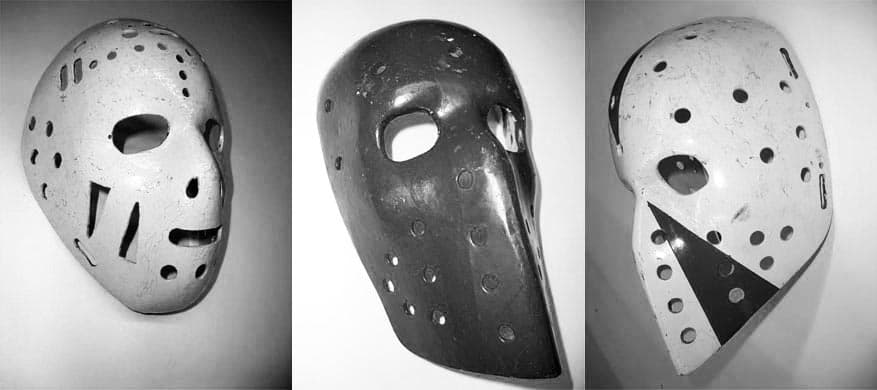
Goalies would send moulds of their faces from all over North America and many traveled to Toronto to have their moulds made. Brown made a custom product that goalies needed and loved.
The only problem was working with the fiberglass material and chemicals. Working with the smell and itchy material was not my idea of fun. But I new the Masks would pave the way to other products with less health hazards.
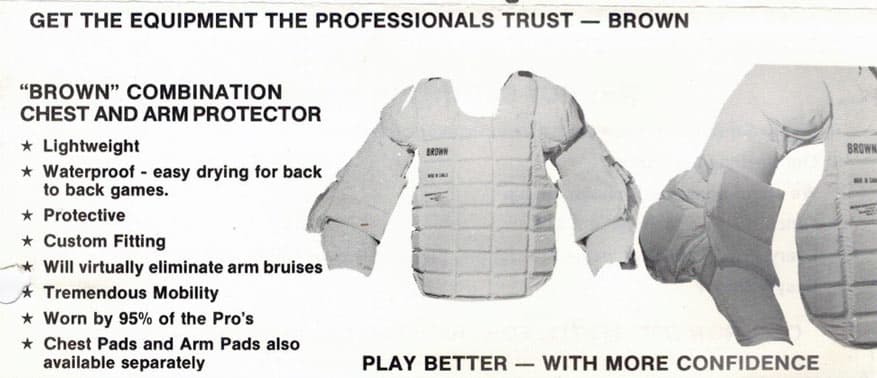
A Chest and Arm Revolution
The best arm pads of the day were made of felt, covered with a piece of leather. All they did was muffle the scream when the puck drilled into your arm or shoulder. They were two pieces and the arms were separate from the chest. The chest pads were not much better. They absorbed sweat and didn't protect you very well. They were brutal to say the least.
When asked why John chose to produce chest and arms, he responded:
"Chest and arm pads were the worst piece of equipment a goalie had the misfortune of having to wear."
In 1972, John was completing his first designs for a one piece chest and arm. Little did he know at the time, those designs would change how goalies were protected forever. John's new designs used water proof nylons and foam with reinforced plastics. Foam and plastics were relatively new to the sporting goods industry and had not made it into goalie equipment yet. There was a real opportunity to make significant changes and when John began selling the new chest and arms to many of his face mask customers, it was a hit. Everyone loved them.
In the early 1970s word had spread to some of the pro goalies about the equipment Brown was manufacturing. It wasn't long before the pros came calling in search of better protection. John started visiting the National and World Hockey League goalies when they came to play in Toronto.
A lot of the veteran goalies were reluctant to wear better protective gear. Many had just started wearing a mask for facial protection and still had beliefs that pain was a key part of being a pro goalie. It was shocking logic, as John describes it:
They [Veteran goalies] were a bruised and battered bunch. In most cases each team had a veteran goalie and a younger backup. When I showed the younger goalie the chest and arm they wanted it badly. The older guys were slow to move to it. They felt that being a pro meant you had to play hurt.
Gradually the older generation of goalies retired and all the young goalies wanted the Brown Chest and Arm. Not the odd guy, but ALL of them. For many years, all of the goalies in all the pro leagues and most of the junior leagues in North America wore Brown chest and arms.
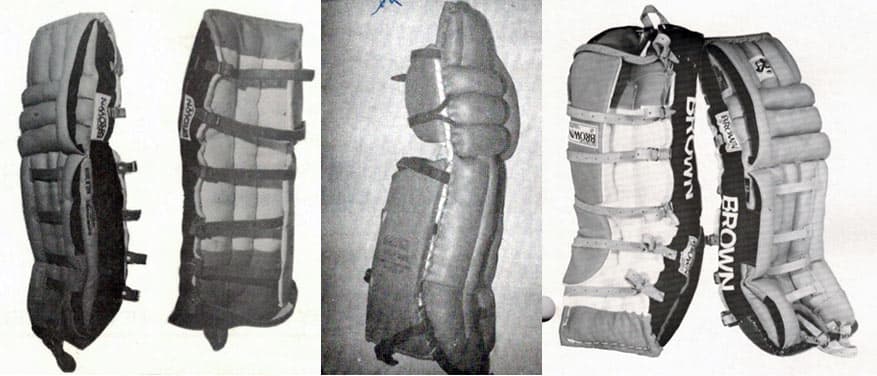
Goal Pads
Since the 1930s all pro goal pads were made by "Pops" Kenesky in Hamilton, Ontario. By the 1970s "Pops" was well into his 90s and struggling to keep up with the demand. Ted Bourdon from Chambly, Quebec started to make pads and many Quebec born pros started to wear his gear. The NHL recently expanded by adding 6 new teams and the World Hockey Association added 12 new teams, so there was an increase in demand for professional quality goal equipment. It became clear that Brown needed to introduce goal pads and gloves to complete the product line and be a full service goalie company.
In 1973, the first Brown goal pads were created. Goalies liked the product, they liked the delivery and they liked that John was willing to solve their problems when needed. "No problem", was the Brown modo at the time. In those days the pro teams expected the goal pads to last at least the whole season, unlike today where a single pro goalie may go through numerous pads (for a long list of reasons). The equipment had to be well built - build them right and build them strong for the long haul.
In the fall I would go to all the training camps. Every team had all of the goalies in their system at camp so I met them and took their orders. In the 1970s, there wasn't many companies seeing the teams in the states. So I was always welcome in Boston, New York, Hartford, Long island, Philadelphia and Washington.
The pro exposure in the early years really put the Brown brand on the map.
The People
Brown has had numerous great goalies wear the equipment over the years, and for a while all of the pro goalies wore at least one piece of Brown equipment. As John recalls, it's the people in the hockey world that make the journey an incredible one.
The most fascinating thing for me was getting to know the goalies. Watching them in practice and seeing how good they really were. They were all very interesting individuals. Some guys were quiet and barely said anything, while others were very outgoing. Their equipment was very critical to them. As a goalie I knew all about the fears every goalie had.
The "dreaded bad game" syndrome haunted every goalie who has strapped on a set of pads. Pro goalies are very strong minded and they have an unwavering belief in their abilities. They never doubt they can do it. Personally I never had that so it was intriguing to see these guys in action. Again some just did it with no fan fare while others had people around them constantly telling them how good they were.
It was very interesting to get to know them and how they reacted under certain game conditions. I learned that the biggest thing about being a pro was to be able to come back after bad games and be able to have a steady string of great games. I spent some time with a goalie who was nearing the end of his career and was now playing in the minors for really good money.
Every year we would discuss retirement and I would say hang in one more year. After several years he said, "I can't do it anymore". He explained that the stress from the thought of having a bad game was too much for him to cope with anymore. I understood exactly what he meant.
After all these years I still have a strong passion for the game and playing the game. Once a week I still get a chance to strap on the pads and test drive some of our latest products with players who are a lot younger than me. It is still a great thrill to make the big save. I like to think it is the ultimate example of "Standing behind our products".
In the end The "Shattered Dream of the late 1960s" was the best thing that could have ever happened to me. I have made a more profound contribution to the greatest game on the planet as a designer and manufacturer then I ever could have as a player.
Attention:
The company has shut down. Read More »